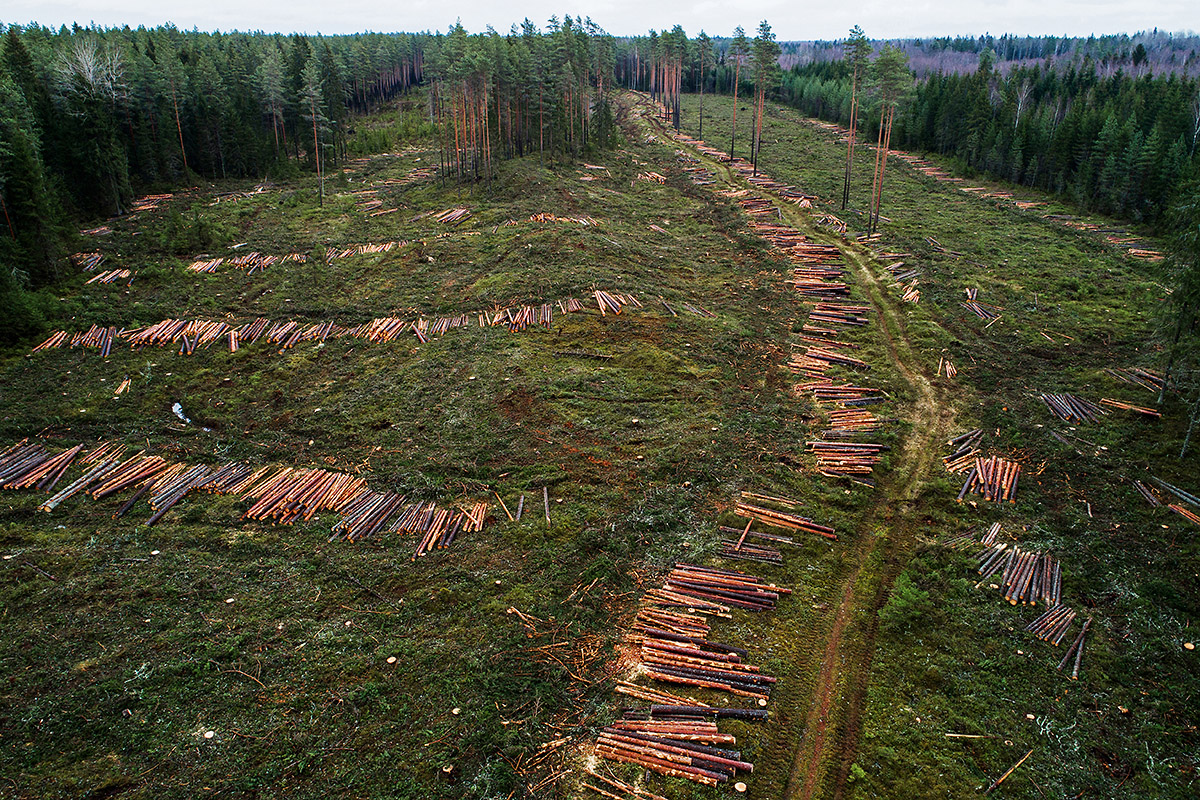Moderate felling increases the diversity of open field community species in the short term
In the case of clearcutting, a large part of the tree layer is removed and a clearcut area is formed. A clearcut area is a temporary habitat with very different living conditions (such as microclimate and the moisture and nutrient regime of soil) than in the forest. Changes in living conditions are accompanied by changes in biota.

Moderate felling increases the diversity of open field community species in the short term. Due to the edge effect, small-scale clearcut areas are even favourable to species richness [1] – various light-loving species (such as the rosebay willowherb and eagle fern) quickly reach the new clearcut areas through the air, or the seeds waiting for suitable conditions are already present in the soil. The clearcut area is also a good place for growth for wild berries, and the flowering plants there are an important feeding ground for bees and other insects.
Meadow species that are threatened by overgrowth will find new temporary habitats in the clearcut areas. As the area of semi-natural grasslands has recently significantly declined, many butterfly species, for example, no longer have suitable habitats there and have found new habitats in clearcut areas [2]. Studies have shown that the species richness of butterflies is almost as high in clearcut areas completely surrounded by forests as in open clearcut areas [3]. Moose, red deer, and roe deer also like clearcut areas, where they find food [4]. When the trees in the area start to grow bigger, the vegetation of the open landscape begins to decline and the species composition changes again.
During clear cutting, a habitat suitable for forest species disappears and the relationships between species also change. The effect of clearcutting is stronger the larger the cutting area and the shorter the felling cycles. Species that need larger, more diverse, or unmanaged areas of natural forests or old and dead trees are particularly affected by clearcutting. Up to a quarter of forest species (such as many insect, moss, and fungal species) are directly related to dead wood [5].
The species richness of birds may also decrease as a result of clearcutting [6]. However, the new clearcut area may be suitable for some bird species as a nesting ground and is used as a feeding ground by several other species. Examples of bird species for which open or semi-open landscapes in the form of clearings are suitable as habitats are the yellowhammer and the tree pipit. However, some birds like the preserved trees left to grow in the clearcut areas due to the wide view that opens from them. One such species is, for example, the raven. Old crop trees are also suitable nesting sites for some species of eagles and woodpeckers, such as white-tailed eagles and black woodpeckers.
Large-scale clearcutting also has a role to play in climate change, as the release of soil-bound carbon into the atmosphere intensifies after felling. It has been estimated that the release of carbon from the soil can be so extensive that a forest that grows later can only restore the ‘escaped’ carbon stock in the soil after decades [1]. At the same time, research conducted in Estonia shows that in some pine and birch forests, it can happen much faster and a young forest can sequester the released carbon in even less than ten years [7].
Last modified: 05.11.2021
__________________________________
[1] J. Liira. Kuidas raied metsas taimi mõjutavad. Sinu Mets, 3/2017.
[2] R. Kreitsberg. Muutused sunnivad kolima: kas niiduliblikad leiavad pelgupaiga raiesmikel? Novaator, 10.01.2018.
[3] M-L. Viljur. Raiesmikud päevaliblikate elupaigana – kas mets on levimisbarjääriks? Magistritöö. Tartu 2014.
[4] T. Randveer. Metsaraie loob ulukitele soodsaid elupaiku! Sinu Mets: metsa õppeleht, nr 47, 7.07.2017.
[5] L. Kuresoo, M. Kohv. Metsade elurikkuse kaitse teeb edusamme. Eesti Loodus, 2/2011.
[6] Metsaraie avaldab linnustikule mõju parasvöötmest troopikani, Puutumatu metsa kadumine ohustab metsalinde üleilmselt
[7] V.Uri, K.Parro. Kuidas mõjutab metsade majandamine süsiniku sidumist? (RMK Loodusblogi, 30.04.2029)